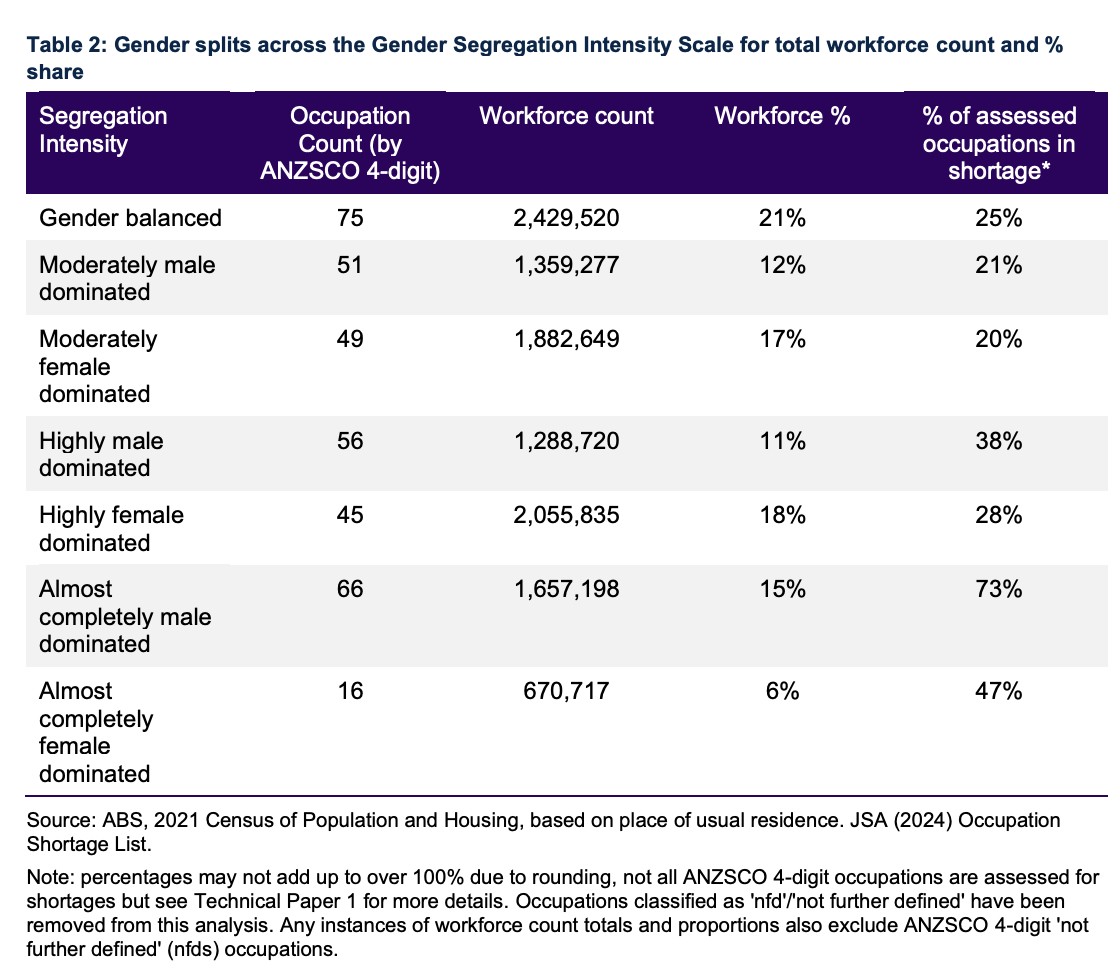
New report finds prevailing gender segregation intensity in Australian jobs

Only one in five occupations in Australia can be considered gender balanced, according to a new analysis, which pointed out that gender segregation in roles can lead to shortages.
Jobs and Skills Australia released on Friday the first part of its Gender Economic Equality Study, which provides evidence and insights on how gendered Australia's jobs are.
It found that only 21% of Australian employees worked in gender-balanced occupations in 2021, while around 70% of occupations had the same gender segregation intensity since 2006.
According to the report, higher skill level jobs are more likely to be gender-balanced, while Skills Level 3 and 4 are where segregation is "particularly acute."
The report said Australia's highly gender-segregated labour market has clear connections with gendered choices, divides, as well as outcomes across education and training pathways.
"This is a serious challenge that needs actors across these systems to come together to make progress," it said.
The report further found that occupation shortages typically worsen as gender segregation intensifies, particularly in almost completely male-dominated occupations.
It found that 73% of almost completely male-dominated occupations were in shortage, compared to 47% of jobs that were almost completely female-dominated.
"Training pathways, retention challenges, and suitability gaps contribute to both occupational segregation and skills shortages, so it is not surprising that, as gender segregation intensifies, so does the likelihood of occupation shortages," the report read.

Australian Minister for Women Katy Gallagher said the findings put Australia among some of the most gender-segregated labour markets in the world.
"The impact of our industry gender segregation is translating into real consequences for Australian families - longer waits to get a house built, expensive tradie bills, and stretched services everywhere from hospitals to aged care facilities," she said in a statement.
"With evidence like this, addressing workforce segregation should be an economic priority for Government and the parliament more broadly."
Gallagher pointed out that the government has initiatives in place, such as the Building Women's Careers programme and the Australian Skills Guarantee, to address gender segregation in the labour market.
"We want more women going into traditionally male jobs and more men going into jobs that have been traditionally held by women because when all Australians can contribute their talents wherever they're needed most, it's better for everyone," the minister said.